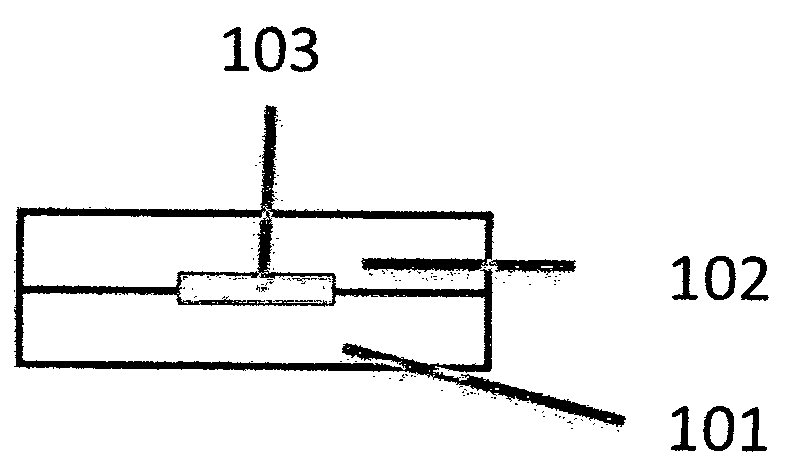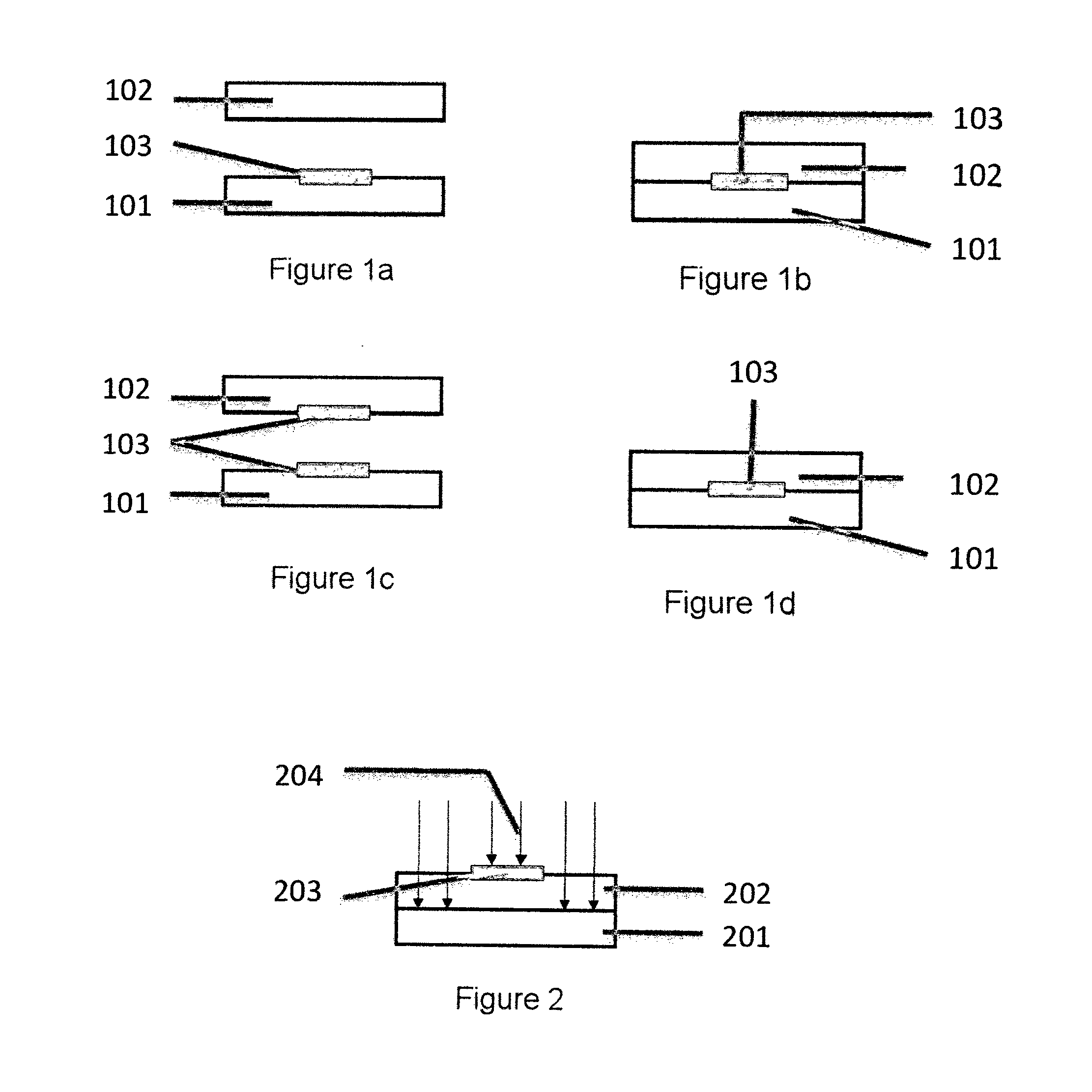In
polymer microfluidic fabrication many of the manufacturing approaches are limited to creating 2-dimensional or 2½-dimensional structures.
The most common of these approaches use either computer
numerical control (CNC) micromilling, injection-moulding or
hot embossing, which can generate only very limited feature complexity.
However, these are often serial fabrication processes that have alignment challenges when assembling micro-parts which lead to further labour-intensive processes with relatively low
throughput and high associated production costs.
In
polymer microfluidics, bonding represents a particularly difficult problem due to the requirements of maintaining the integrity of the microstructures while forming a good seal.
Typically selective bonding is the more expensive technique to implement in production but the spatial control of the bonding seal may be greater, reducing the risk of interfering with microstructures.
However it can be difficult to selectively deposit adhesives in a volume manufacturing setting due the select availability of suitable adhesives and deposition techniques.
Some of the many issues include the
adhesive viscosity requirement, the
adhesive's lifetime prior to bonding, speed of deposition and deposition control.
From a manufacturing view the process requires relatively long
processing times which limits the
throughput capability.
Many of the reaction pathways created by these
exposure techniques involve unstable free radical species.
However the suitability of these techniques has only been demonstrated for a few materials.
However this can be difficult to implement in a high speed production environment and still maintain the tight tolerances required for microstructured devices.
Generally the main problem with this technique is the difficulty of handling the solvents in the production environment.
Furthermore, for fluidic devices the
solvent residues can provide a source of
contamination, and the
solvent may deform the microstructures.
For integration into the production environment, the main limitations are
processing times, and limitation of compatible materials and number of layers that can be processed.
Due to the uniform heat conduction within the polymers which limits spatial resolution, the technique is only suitable for thin films and relatively large structures.
However for microstructures, this can introduce problems due the
non specific heating causing deformation.
Due to these geometric constraints for bonding, ultrasonic sealing is limited in terms of its application to
microfluidics.
For sealing microstructures the effectiveness is typically dependant limited by the deposition technique and evenly controlling the energy absorbed.
For many microstructures in polymeric devices this is further complicated by the deformation of the structure during the
bonding process.
The use of adhesive tapes for
microfluidics is further complicated by chemical or biochemical incompatibility with many assays, and the dimensional limitations provided by the
machining processes of these tapes.
However, with all these area bonding techniques a problem arises where a bond is not required, or required at a different strength, in a selective area between two surfaces in contact with one another.
In many cases selective bonding is not an option due to material compatibility, cost, speed and dimensional constraints.
As with other afore mentioned lateral and vertical flow devices the effect of
capillary action or gravity driven flow is limited to relatively simple protocols as multiple flows from different sources and complex flow profiles, such as
backwashing, are not feasible.
Limitations of such systems include the reliance on capillary or
gravity flow for fluid movement, which inherently causes reproducibility issues with regards to flow rate and limitations in terms of suitability of
assay protocols.
These capillary and
gravity flow devices are limited in terms of performing only simple one-step assays; they provide imprecise handling of fluid volumes which affects the overall reproducibility; they are restricted in terms of the maximum volume they can use and therefore limits the sensitivity; they are susceptible to matrix effects obstructing pores; and they typically provide a qualitative or semi-quantitative response [Analytical and Bioanalytical
Chemistry, Volume 393, Number 2, January 2009, pp.
Most of these difficulties in optical measurement within microstructures arise from the tight dimensional constraints, reduced path lengths, and reduced fluid volumes leading to much smaller
signal responses.
However a problematic aspect of microfluidic device manufacture is the increase in cost associated with the manufacturing processes required to achieve smaller dimensions and their associated tolerances.
However for
polymer device fabrication it is generally known that as the dimensions of a feature on a device decreases in size and the tolerance required, the cost and difficulty in implementing in a
mass manufacturing environment increases greatly.
This is particularly problematic in microfluidics where the tolerance requirements are often much less than 100 micron.
 Login to View More
Login to View More 


